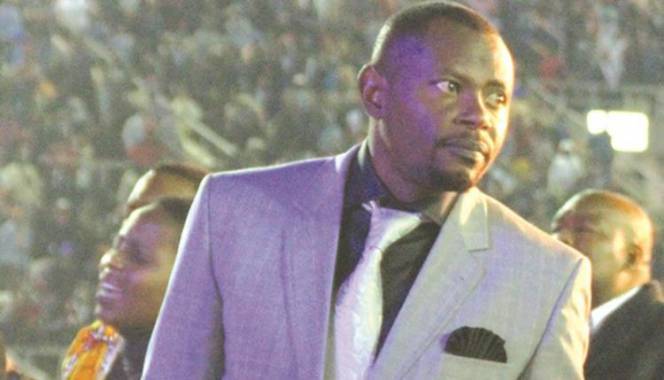The Sunday Mail

We have so far recognised that Yahoshua was a Nazarene Rabbi. The following are some of the specific scriptural pointers:
1.He travelled from place to place with his disciples depending on the hospitality of others (Luke 8:1-3) and often meeting in private homes (Luke 10:38-42).
2. During travelling, Rabbis would visit local synagogues because of the discussion of Scripture that occurred regularly in these community centres (Matt. 4:23).
3. Throughout, Pharisees kept inviting Yahoshua to dinner to discuss his teachings because they perceived him as a Rabbi with authority, not a master craftsman of carpentry anymore.
4. Rabbis used methods of interpreting Scripture that were similar to each other. For example, the great Rabbis used a technique today called “Remez,” hint or allegorical, in which they used part of a Scripture passage in discussion assuming their audience’s knowledge of the Hebrew Scriptures would allow them to deduce for themselves fuller meaning. Apparently Yahoshua used this method often. “But when the chief priests and the teachers of the law saw the wonderful things he did and the children shouting in the temple area, “Hosanna to the Son of David,” they were indignant. “Do you hear what these children are saying?” they asked him.
“Yes,” replied Yahoshua, “Have you never read, ‘From the lips of children and infants you have ordained praise?” – Matthew 21:15-16. He was quoting from Psalm 8:2. Their anger at Yahoshua is better understood when you realize that the next phrase in the Psalms adds the reason why children and infants would praise, “because of the enemies of the divine who would be silenced (Psalm 8:2). In other words the chief priests realized Yahoshua was implying they were Yahovah’s enemies. Another example is Yahoshua’s comments to Zacchaeus (Luke 19:1-10). Yahoshua said, “For the Son of Man came to seek and to save what was lost.” (Luke 19:10) The background to this statement is probably Ezekiel 34.
5. Rabbis used similar teaching techniques like the use of parables. He uses similar themes (landowner, king, and farmer) as well.
6. A Rabbi with authority made new interpretations and pass legal judgments. Hillel taught, “Do not do to your enemies that which you hate.” Yahoshua turned this around, saying, “Do unto others as you would have them do unto you.” Interpretation was on how to view it correctly so as to know how to live and act correctly. Most of the teachers were simply Torah teachers (often translated as ‘Scribes’ or ‘Teachers of Law’) who could only teach accepted interpretations. They were limited to teach children in “Bet Sefer” (memorizing the Torah) and “Beth Talmud” (application of Torah and Oral Law). They were limited to what was acceptable of the Torah practices and traditional to the community they lived in. Crowds were amazed because Yahoshua taught with authority not as their Torah teachers (Matt. 7:28-29). Among the few, Yahoshua taught with rabbinical authority and he was questioned about such authority (Matt. 21:23-27). “The people were amazed at his teaching, because he taught them as one who had authority, not as the teachers of the law.” – Mark 1:22. One formula for rendering such rulings was “You have heard it said…, but I tell you….”
7. Fulfilling the Torah was the task of a first century Rabbi. The technical term for interpreting the Scripture so it would be obeyed correctly was “fulfil.” “To fulfil” is “to make complete, confirm, show clearly the true meaning, bring to full expression, to make completely full, uphold, sustain and preserve.”
To interpret Scripture incorrectly so it would not be obeyed as intended was to “destroy” the Torah.
Yahoshua “described his purpose or intent (“I have come/not come”) with respect to the Torah. He stated that his purpose was NOT to abolish the Torah. The term abolish (kataluo) carries the idea of: do away with, annul, make invalid, repeal, terminate. He came to do none of these.
In fact, he mentioned “not abolish” twice so as to emphasise his intent. The strength of his statement is further reinforced by the phrase, “Don’t think that”, which has the thrust of “Never think that.” He wanted people to clearly understand that he would not annul, repeal or terminate the Torah!…A sage was accused of abolishing or cancelling the Torah if he misinterpreted a passage, nullifying its intent. If he fulfilled it, he had properly interpreted Scripture so as to preserve and correctly explain its meaning” – ‘Jesus Through Jewish Eyes: A Rabbi Examines the Life and Teachings of Jesus’ by Rabbi John Fischer.Yahoshua used these terms to describe his task as well (Matthew 5:17-19). Yahoshua’s mission was not to do away with the Torah. His mission was to fulfil it and ‘to show how to correctly keep it.’
One of the ways Yahoshua interpreted the Torah was to stress the importance of the right attitude of heart as well as the right action (Matt. 5:27-28).
8. Yahoshua’s questioning approach was a rabbinical method. “When you learn from a rabbi, the most effective method they use is that of answering questions with questions. The purpose of this is to lead the questioner to find their own answer, rather than giving an answer to them. The theory goes like this “If I give you my answer to a question, it is my answer. If a different answer comes along that you like better, you give up nothing by disregarding my answer.
However, if I ask you a question that leads you to discover the answer, it becomes your answer, and you are much more likely to retain it when faced with alternatives.” – Rabbis, Authority and Questionswww.fishingtheabyss.com/archives/92.
For feedback contact [email protected]. A gallery of previous articles is available on www.sundaymail.co.zw///. He also writes on different issues, you can visit www.shingaindoro.blogspot.com



